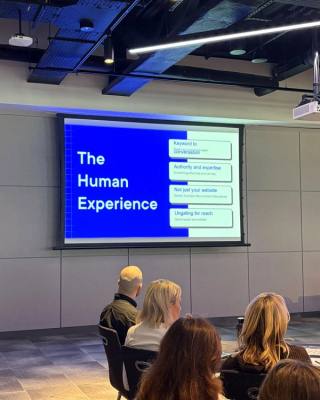The era of one-size-fits-all digital strategy is over. For multinational companies, localised web solutions are no longer a secondary asset, but a frontline business tool.
As trade dynamics shift and geopolitical realities harden, global brands are being forced to think small. That doesn’t mean walking back ambitions, but rather scaling with precision. Marketing strategies and product offerings are changing by region, and websites must reflect that evolution.
Global strategy, local execution
In the past, it was enough to maintain a centralised global site, perhaps with a few localised landing pages or language toggles. But today’s customers don’t just want translated content, they expect a website that understands their market. Pricing, logistics, regulatory messaging, tone, design conventions, all of these elements matter more than ever when doing business across borders.
Consider the impact of GDPR in Europe, or the digital firewalls in China. Think of the different expectations around payment gateways in Germany versus Brazil, or delivery timelines in the UAE compared to Australia. Multinational brands now face a complex challenge: how to project a consistent identity while adapting meaningfully to each market.
A response to fragmentation
Global fragmentation is no longer an emerging trend, it’s the status quo. Supply chains are being regionalised. Trade blocs are tightening. Economic nationalism is reshaping how companies operate internationally. In this environment, digital localisation isn’t a nice-to-have. It’s a competitive imperative.
When tariffs shift, or data residency laws tighten, your marketing cannot afford to lag. Companies that rely solely on a generic global platform risk appearing out of touch (or worse, non-compliant!). Local websites allow for real-time responsiveness and market-appropriate messaging, enabling brands to stay relevant and agile.
More than translation: true localisation
True localisation goes deeper than swapping out English for Spanish or Japanese. It means adapting calls to action, showcasing relevant case studies, integrating locally preferred UX patterns, and addressing the specific pain points of each market.
For example, a cybersecurity firm may lead with data protection in Europe but prioritise uptime and redundancy in Southeast Asia. A fashion retailer might highlight sustainability in Scandinavia while focusing on affordability in Latin America. These aren’t just content tweaks, they’re strategic decisions, and the website is where they play out in real time.
A backend that supports scale
What often gets overlooked in discussions about localisation is the backend. A functional, modular backend is the invisible engine that makes regional flexibility possible at scale. Kooba have built and maintained extensive international website suites for clients like Bord Bia and DOLE, where the ability to manage dozens of sites from a single, central CMS is operationally essential.
In the case of Bord Bia, we developed a platform that enables regional teams to publish market-specific content while maintaining global brand integrity. For DOLE, we implemented a system that supports multiple markets, languages, and regulatory environments, all under one cohesive technical architecture. These are not just design projects, but fully-fledged operational ecosystems.
Building local systems
The solution isn’t to build from scratch for every market, but to create a modular digital framework. This allows local teams to manage and customise core assets without sacrificing consistency. Think of it as a central nervous system with regionally specialised limbs. Each site may behave differently, but they are all controlled from the centre.
At Kooba, we understand exactly what this looks like. For clients, it means seamless integrations across a centralised backend, with automated content population across languages and regions. For the end-user, it translates to a locally customised user experience, informed by region-specific research and UX design. It requires the best of development and design teams, but it creates a superior outcome for everyone involved.
If you’re looking for a digital partner who can build a solution for all of your audiences, then Kooba might be for you. Get in touch today to hear more!








